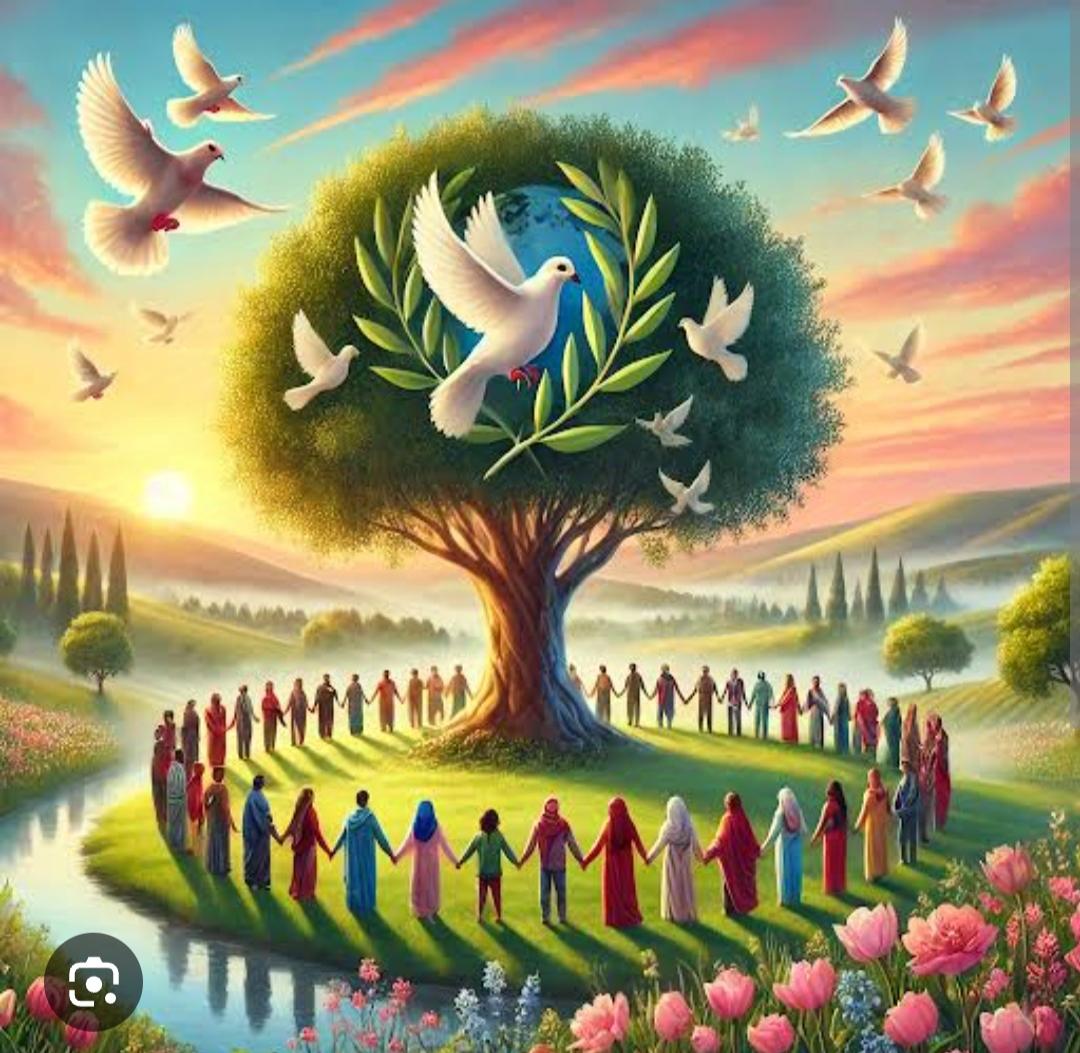The International Day of Peace, also officially known as World Peace Day, is a United Nations-sanctioned holiday observed annually on 21 September. It is dedicated to world peace, and specifically the absence of war and violence, such as might be occasioned by a temporary ceasefire in a combat zone for humanitarian aid access. The day was first established in 1981 and first observed in September 1982 and is kept by many nations, political groups, military groups, and people
To inaugurate the day, the United Nations Peace Bell is rung at UN Headquarters (in New York City). The bell is cast from coins donated by people from all continents except Africa, and was a gift from the United Nations Association of Japan, as "a reminder of the human cost of war"; the inscription on its side reads, "Long live absolute world peace".
In recent years, a searchable map of events has been published at un.org.
The United Nations General Assembly declared, in a resolution sponsored by the United Kingdom and Costa Rica,[4] the International Day of Peace, to be devoted to commemorating and strengthening the ideals of peace.[5] The date initially chosen was the regular opening day of the annual sessions of the General Assembly, the third Tuesday of September
This was changed in 2001 to the current annual celebration on 21 September each year — see 2001 below.
1983 – Annual Reports
Beginning in 1983, at the request of the Office of the Secretary-General of the United Nations, Pathways To Peace (PTP) submitted a "We the Peoples" Initiative Annual Report to the UN, summarizing the Peace Day activities.[7] The reports from 2005 and 2009 are available as archives as cited below. For its initiatives for the International Year of Peace in 1987, PTP was granted "Peace Messenger" status by UN Secretary-General Perez de Cuellar.[8] In 2006 the name was changed from "We the Peoples" Initiative to "Culture of Peace Initiative."[7]
1996 – Seanad Éireann debate
A proposal for expanding the International Day of Peace to include Reconciliation,[9] in which a massive number of emblems (White Doves) would be distributed after a formal presentation at the United Nations, was put forward by Vincent Coyle, of Derry, Northern Ireland, and was debated at Seanad Éireann. It was accepted that it would be impractical for one member state to ask for a particular slot at a general UN ceremony.[10] However, events have been held at the United Nations in New York, with the support of Kofi Annan, in April.
1996 – Seanad Éireann debate
A proposal for expanding the International Day of Peace to include Reconciliation,[9] in which a massive number of emblems (White Doves) would be distributed after a formal presentation at the United Nations, was put forward by Vincent Coyle, of Derry, Northern Ireland, and was debated at Seanad Éireann. It was accepted that it would be impractical for one member state to ask for a particular slot at a general UN ceremony.[10] However, events have been held at the United Nations in New York, with the support of Kofi Annan, in April.
2001 – Date set at 21 September
In 2001 the opening day of the General Assembly was scheduled for 11 September, and Secretary General Kofi Annan drafted a message recognising the observance of International Peace Day on 21 September.[11] The September 11 attacks, often referred to as 9/11, were perpetrated on that same day when a series of four coordinated terrorist attacks by the militant Islamist terrorist group al-Qaeda against the United States of America occurred just blocks away from the UN on the morning of Tuesday, September 11, 2001. That year the day was changed from the third Tuesday to specifically the twenty-first day of September, to take effect in 2002. A new resolution was passed by the General Assembly,[4] sponsored by the United Kingdom (giving credit to Peace One Day) and Costa Rica (the original sponsors of the day), to give the International Day of Peace a fixed calendar date, 21 September, and declare it also as a day of global ceasefire and non-violence
2004 – Taiwanese commemorative stamp controversy
A diplomatic stir occurred when Lions Clubs International sponsored a competition for six posters to be used for International Day of Peace commemorative stamps issued by the UN Postal Administration. A poster by 15-year-old Taiwanese school student Yang Chih-Yuan was announced as one of the winners, but the announcement was withdrawn. Taiwan media reports, Taiwan Lions Club and the government of Taiwan claimed the decision not to use the poster resulted from pressure from China;[13] the rejection of the student's painting on political grounds did not reflect the ideals of the International Day of Peace.[14] The UN issued a statement that, although in the shortlist of eight designs, "due to an internal misunderstanding and miscommunication, Mr. Yang's proof got publicized in error as one of the six stamps intended to be issued."[13] The government of Taiwan (Republic of China) later issued a stamp containing the image.

